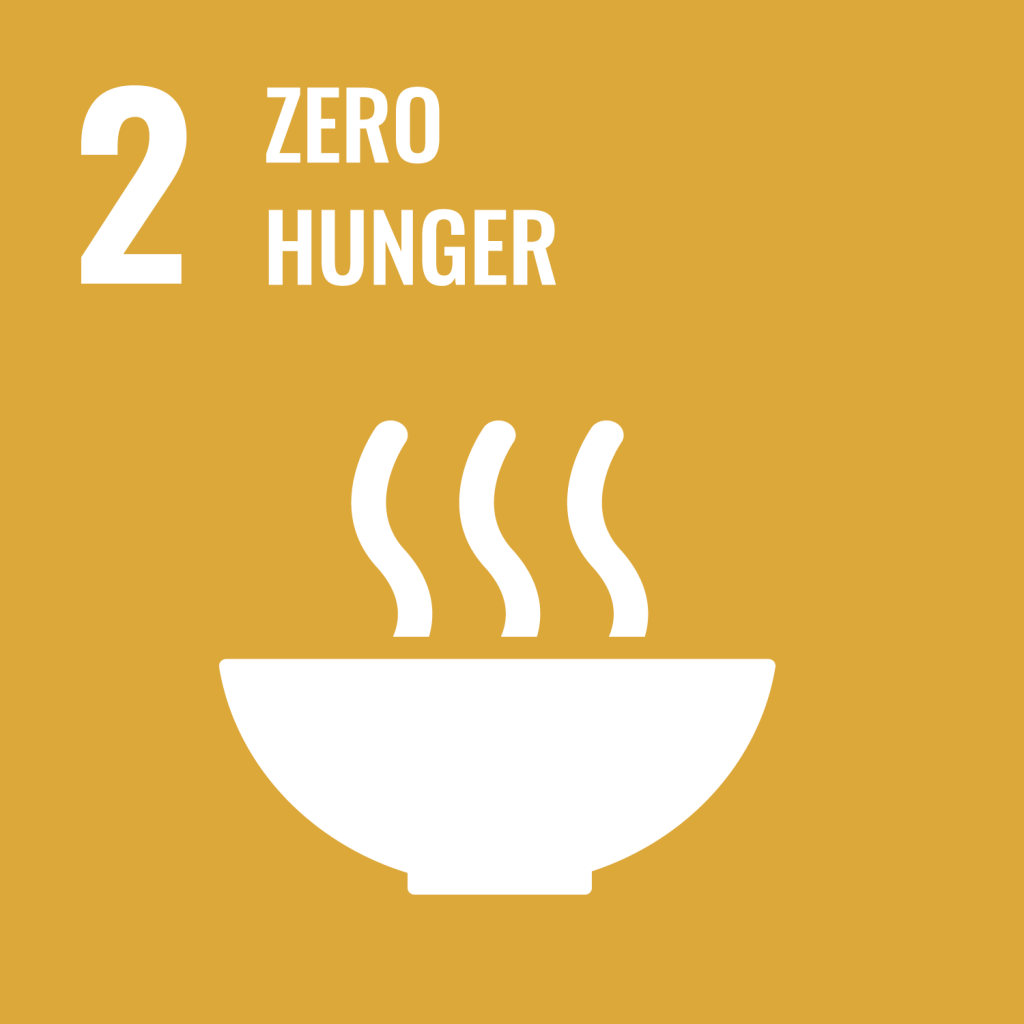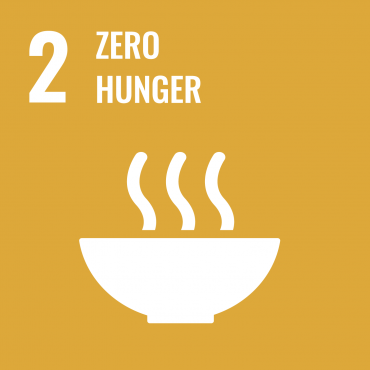
Goal 2: End hunger, achieve food security and improved nutrition and promote sustainable agriculture
In 2017, 821 million people, or approximately 1 out of 9 people in the world, were undernourished (up from 784 million in 2015). Two thirds of undernourished people, or about 515 million people lived in two regions; Sub-Saharan Africa and Southern Asia. After years of decline, the number of undernourished people in the world has been steadily rising for the last few years, and without any significant changes to the global food and agricultural system, this number is expected to grow to over 2 billion by 2050.
Undernourishment can have a devastating effect on young children. Poor nutrition causes nearly half of all deaths in children under 5 worldwide (over 3 million children each year). Another 22% or roughly 1 out of 5 children worldwide under the age of 5 are stunted (low height for age caused by long-term undernourishment), and 7% or 1 out of 14 children worldwide are affected by wasting (low weight for height typically caused by acute significant undernourishment).
Agriculture, forestry, and fisheries can provide more than enough nutritious food for the entire world’s population if done correctly, all while generating living wages, protecting the environment, and supporting rural development. But in our current global food system, soils, forests, freshwater, and biodiversity are rapidly degrading, and Climate Change is increasing the risk of disasters such as droughts and flooding that can put even more pressure on an already stressed system.
Goal 2 Targets:
- 2.1 By 2030, end hunger and ensure access by all people, in particular the poor and people in vulnerable situations, including infants, to safe, nutritious and sufficient food all year round.
- 2.2 By 2030, end all forms of malnutrition, including achieving, by 2025, the internationally agreed targets on stunting and wasting in children under 5 years of age, and address the nutritional needs of adolescent girls, pregnant and lactating women and older persons.
- 2.3 By 2030, double the agricultural productivity and incomes of small-scale food producers, in particular women, indigenous peoples, family farmers, pastoralists and fishers, including through secure and equal access to land, other productive resources and inputs, knowledge, financial services, markets and opportunities for value addition and non-farm employment.
- 2.4 By 2030, ensure sustainable food production systems and implement resilient agricultural practices that increase productivity and production, that help maintain ecosystems, that strengthen capacity for adaptation to climate change, extreme weather, drought, flooding and other disasters and that progressively improve land and soil quality.
- 2.5 By 2020, maintain the genetic diversity of seeds, cultivated plants and farmed and domesticated animals and their related wild species, including through soundly managed and diversified seed and plant banks at the national, regional and international levels, and promote access to and fair and equitable sharing of benefits arising from the utilization of genetic resources and associated traditional knowledge, as internationally agreed.
- 2.A Increase investment, including through enhanced international cooperation, in rural infrastructure, agricultural research and extension services, technology development and plant and livestock gene banks in order to enhance agricultural productive capacity in developing countries, in particular least developed countries.
- 2.B Correct and prevent trade restrictions and distortions in world agricultural markets, including through the parallel elimination of all forms of agricultural export subsidies and all export measures with equivalent effect, in accordance with the mandate of the Doha Development Round.
- 2.C Adopt measures to ensure the proper functioning of food commodity markets and their derivatives and facilitate timely access to market information, including on food reserves, in order to help limit extreme food price volatility.
This Month’s Challenge:
In March 2020, we will be leveraging data from the World Health Organization to track the U.N.’s progress towards the targets listed above. The data can be found on our data.world page found here https://data.world/sdgvizproject/goal-2-zero-hunger
We have also added a new section to our data.world site this month to include some supplemental data sources. This includes a file that has population by country and region for each year between 2000 and 2017, and another file that has mappings for individual countries to regions and continents. Those files can be found here https://data.world/sdgvizproject/supplement-files
If you would like participate, you can use data from any source, but the overall goal is to focus your analysis on worldwide hunger. If you come across other interesting datasets, please let us know so we can add them to our page on data.world. The deadline for submission will be March 31, 2020. Make sure to tag us in your submission, add the #TheSDGVizProject hashtag, and add your submission to #TheSDGVizProject tracker
As we mentioned on our Home page, building a viz is not the only way to participate. Our main goal is to spread awareness, so if you see a viz with #TheSDGVizProject, please share it. And keep an eye out for a post at the end of the month with ways that you can contribute locally to help put an end to hunger.

